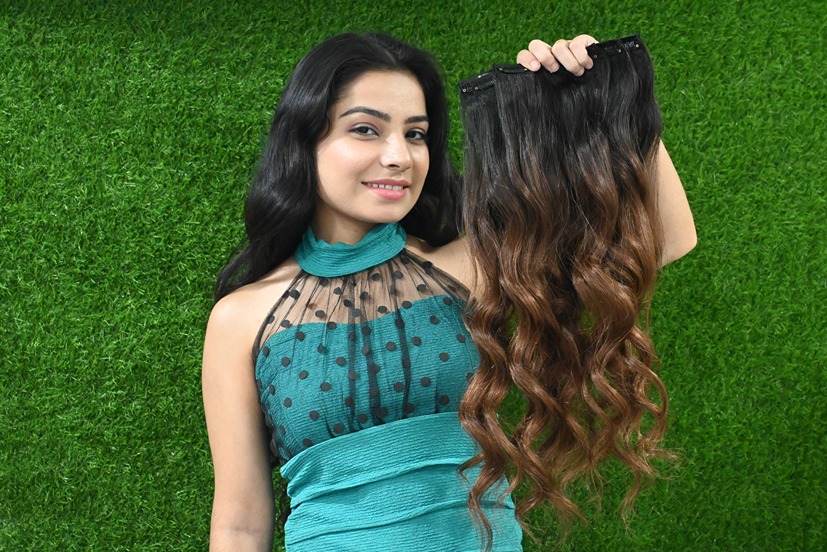Hair extensions are a game-changer for anyone looking to add length, volume, or a touch of glamour to their hairstyle. Whether you use them occasionally for special events or wear them daily as part of your beauty routine, maintaining their quality is essential. One of the most common issues users face is tangling and shedding, both of which can significantly reduce the lifespan of even the best-quality extensions. But with proper care, attention, and a few smart habits, you can easily keep your extensions looking smooth, soft, and luxurious for much longer.
In this comprehensive guide, we’ll explore the main causes of tangling and shedding in hair extensions and offer practical, step-by-step tips to prevent these issues. From choosing the right products to refining your daily routine, this article will help you maintain healthy, beautiful extensions with ease.
Why Do Hair Extensions Tangle and Shed?
Before diving into the solutions, it’s helpful to understand why tangling and shedding occur in the first place. Human hair extensions, even when made from 100% natural hair, lack the scalp’s natural oils that help nourish and smooth your hair. This means they are more prone to dryness, friction, and breakage if not cared for properly.
Tangling often happens due to friction, product build-up, dryness, or improper storage. Hair rubbing against clothing, especially at the nape of the neck, can create knots. Wind, heat, and sleeping with loose hair can also contribute.
Shedding, on the other hand, is when individual strands fall out of the weft or bond. It typically results from poor manufacturing, rough brushing, chemical damage, or incorrect washing techniques.
Fortunately, with mindful care and the right maintenance routine, these problems can be minimized significantly.
Tip 1: Invest in High-Quality Hair Extensions
Prevention starts with the product itself. Always choose high-quality, 100% human hair extensions from a trusted manufacturer. Cheap synthetic or mixed-fiber extensions are more prone to tangling because they don’t behave like natural hair and can’t be detangled easily without damage.
Look for extensions with:
- Intact cuticles aligned in one direction (Remy hair)
- Strong wefts or bonds with minimal processing
- Minimal chemical treatments or artificial coatings
Although premium extensions may cost more upfront, they last longer, perform better, and require less maintenance in the long run.
Tip 2: Use the Right Shampoo and Conditioner
Washing your extensions with harsh, sulfate-based products will strip them of moisture, leaving them dry, brittle, and more likely to tangle or shed. Always opt for sulfate-free, alcohol-free shampoos and moisturizing conditioners.
When washing:
- Gently lather the shampoo from root to tip without scrubbing or bunching the hair
- Rinse thoroughly with lukewarm water to prevent product residue
- Apply conditioner from the mid-lengths to the ends and let it sit for a few minutes
- Avoid applying conditioner near tape, keratin bonds, or roots to prevent loosening
Tip 3: Brush Gently and Regularly
Brushing is essential for preventing tangles, but doing it incorrectly can cause breakage and shedding. Always use a wide-tooth comb, loop brush, or extension-safe detangling brush and follow these steps:
- Detangle from the ends and work your way up
- Hold the weft or roots while brushing to minimize tension
- Never brush wet extensions unless they are specifically designed for wet detangling
- Brush 2–3 times a day, especially before bed and before washing
Keeping your extensions smooth and knot-free with proper brushing helps reduce unnecessary pulling that leads to shedding.
Tip 4: Avoid Heat Damage
While human hair extensions can be styled with heat tools, frequent use of high temperatures without protection can dry out the strands and weaken the wefts, causing shedding and tangling.
Protect your extensions by:
- Using a heat protectant spray before any heat styling
- Keeping tools at a moderate temperature (below 180°C or 350°F)
- Avoiding styling the same area repeatedly
Air drying when possible and limiting the use of flat irons and curlers will help preserve the hair’s integrity over time.
Tip 5: Store Extensions Properly
Improper storage is one of the leading causes of tangling for clip-ins and temporary hair extensions. When not in use, always store your extensions in a clean, dry place where they won’t be exposed to friction or dust.
Here’s how to store them correctly:
- Gently brush the extensions before storing
- Lay them flat in a silk or satin pouch, box, or storage hanger
- Keep them away from sunlight, heat, and humidity
By keeping your extensions protected between uses, you prevent knots and extend their lifespan.
Tip 6: Sleep With Care
Sleeping with permanent extensions like tape-ins or keratin bonds requires special care to avoid matting at the roots. Never sleep with clip-in extensions or temporary types — always remove them before bed.
For semi-permanent extensions:
- Braid your hair into a loose side braid or tie it in a low ponytail to reduce friction
- Sleep on a silk or satin pillowcase to minimize friction and preserve moisture
- Avoid going to bed with wet hair, as this can cause matting and breakage
This simple bedtime routine can significantly reduce tangling and make your morning hair care faster and easier.
Tip 7: Minimize Product Buildup
Using too many styling products like hairspray, serums, and oils can lead to buildup on your extensions, making them sticky, heavy, and more prone to tangling. Try to keep product use minimal and lightweight.
If your extensions feel weighed down or sticky:
- Use a gentle clarifying shampoo once every few weeks
- Rinse thoroughly and follow up with a deep conditioner to restore moisture
Clean, lightweight hair extensions are much easier to manage and less likely to shed or knot.
Tip 8: Schedule Regular Maintenance
If you’re wearing semi-permanent extensions, don’t neglect regular maintenance appointments. Over time, bonds may slip, and natural shedding from your hair can affect how the extensions sit.
Regular check-ins with your stylist help:
- Reinstall or reposition extensions that have grown out
- Remove and reapply tape-ins as needed
- Prevent tangling at the roots or base of the extensions
Proactive care will keep your extensions healthy and comfortable to wear long-term.
Final Thoughts
Hair extensions are a beautiful way to enhance your hairstyle, but they require consistent, gentle care to prevent tangling and shedding. By investing in high-quality extensions, using the right products, brushing carefully, and storing them properly, you can keep them looking flawless for months. Avoiding damage from heat, buildup, or rough handling is key to extending their lifespan and maintaining a salon-fresh look every day.
With the right habits and a bit of attention, you’ll enjoy smooth, tangle-free, and long-lasting hair extensions that feel just as fabulous as they look.

